Description
Hollyhock Chaters White Seeds
Hollyhock Chaters White Seeds A hardy cottage garden favorite, producing flower spikes rise up to 2.4 meters tall smothered in 10 cm diameter peony type fully double flowers (please note that in their first year they quite often produce single much shorter flower stem and often not double flowers). Needs shelter or support whilst in flower. Easy to grow. Hardy Perennial.
CULTIVATION ADVICE
- Sow Hollyhock Chaters White seeds in early spring after the last frost date or in late autumn. Choose a location with well-draining soil and full sunlight.
- Hollyhocks prefer rich, well-draining soil. Incorporate organic matter like compost or aged manure to improve soil fertility and drainage.
- Ensure the planting area receives full sun for at least 6 to 8 hours daily. Adequate sunlight promotes healthy growth and abundant flowering.
- Sow the seeds directly into the soil at a depth of about ¼ inch (6 mm). Space the seeds or seedlings around 18 to 24 inches apart to allow for their mature size
- Keep the soil consistently moist but not waterlogged during the germination period. Once established, Hollyhocks are moderately drought-tolerant but benefit from regular watering, especially during dry spells.
- Apply mulch around the plants to retain soil moisture and suppress weed growth. Keep the area around the base of the plants free from weeds to reduce competition.
- Prior to planting, mix in a balanced fertilizer according to package instructions to provide essential nutrients for healthy growth.
- As Hollyhocks grow tall, providing support such as stakes or a trellis helps prevent them from falling over in windy conditions.
- Deadhead spent flowers regularly to encourage prolonged blooming. Prune back damaged or dead stems to promote new growth.
- Watch out for pests like aphids or rust diseases. Treat infestations promptly with appropriate insecticidal soap or fungicides if necessary.
- Hollyhocks are typically biennial or short-lived perennials. Provide a layer of mulch around the base to protect the roots during colder months.
- Hollyhocks might self-seed and produce new plants. Thin overcrowded seedlings to maintain adequate spacing.
- Plant Hollyhocks alongside other tall perennials or against walls/fences for a beautiful background or to create vertical interest in the garden.
- Hollyhocks produce nectar-rich flowers that attract bees, butterflies, and hummingbirds, making them valuable additions to pollinator-friendly gardens.
- Allow some flowers to mature and produce seeds. Collect seeds from dried seedpods for propagation or to share with other gardeners.
- Hollyhocks prefer well-draining soil but can tolerate various soil types. They thrive in slightly alkaline to neutral soil with a pH around 6.0 to 8.0.
- Hollyhocks generally thrive in moderate climates. Adequate airflow helps prevent fungal diseases, especially in humid conditions.
- Once established, Hollyhocks are relatively drought-tolerant. Water deeply but infrequently to encourage deep root growth. Avoid waterlogging, which can lead to root rot.
- Amend the soil with organic matter like compost annually to replenish nutrients. Avoid excessive fertilization, as Hollyhocks can become leggy with too much nitrogen.
- Regularly remove spent flowers to encourage continuous blooming throughout the growing season.
- In colder climates, Hollyhocks benefit from a layer of mulch to protect the crown during winter. Prune back dead foliage in late fall.
- Hollyhocks can grow in large containers. Ensure the pot has proper drainage and use a well-draining potting mix.
- Provide good air circulation by spacing plants adequately. Avoid overhead watering to reduce the risk of fungal diseases.
- Pair Hollyhocks with other cottage garden favorites like delphiniums, foxgloves, or roses for a charming and traditional garden aesthetic.
- Hollyhocks are short-lived perennials but can reseed themselves. Divide clumps every few years to maintain plant vigor.
- Hollyhocks attract pollinators and beneficial insects to the garden, contributing to a healthier ecosystem.
- Trim back any damaged or dead stems regularly to encourage new growth and maintain a tidy appearance.
- Allow some seedpods to mature and dry on the plant. Collect seeds for future propagation or sharing with fellow gardeners.

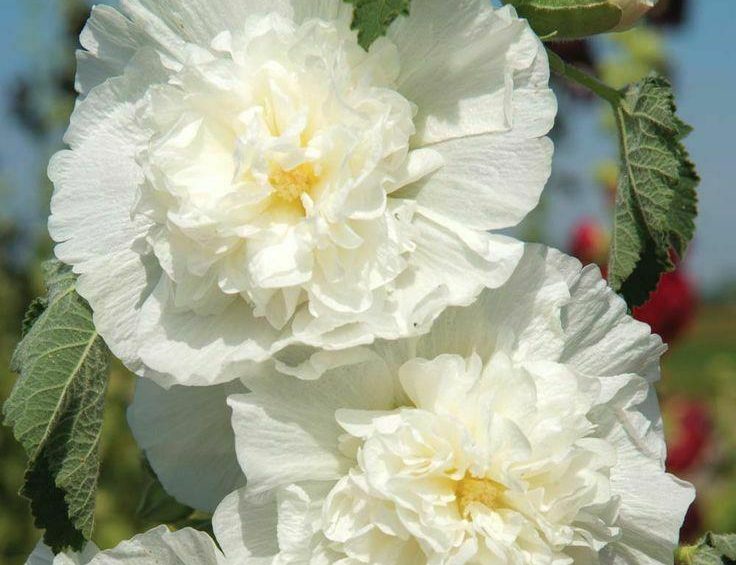
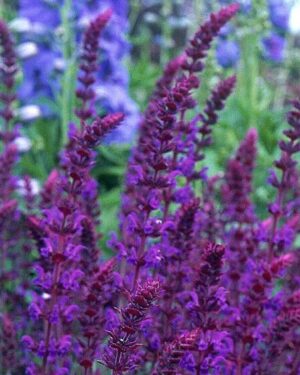

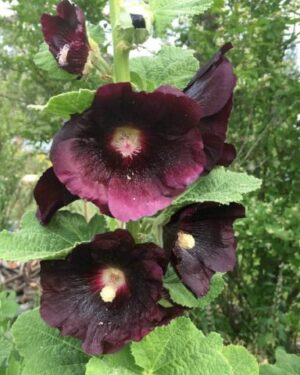
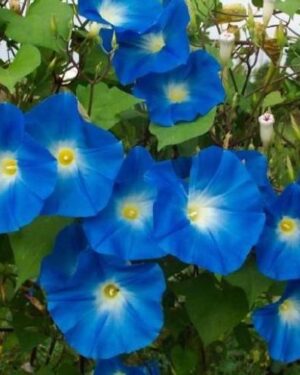

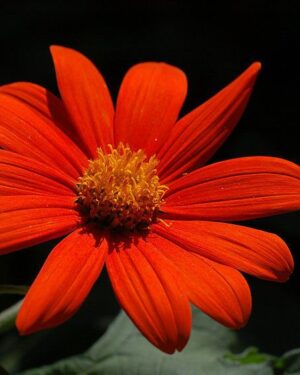
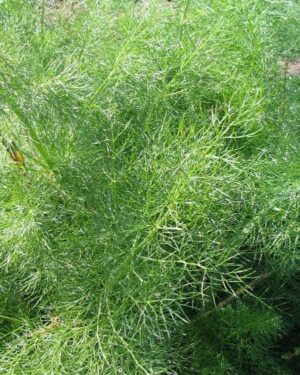
Reviews
There are no reviews yet.